mobile View, to the German Version tap the flag


- Republic of Guatemala
- authoritarian republic
- own name: República de Guatemala
• Flags
• Historical Flags
• Meaning/Origin of the Flag
• Coat of Arms
• Meaning/Origin of the Coat of Arms
• Aircraft Roundel
• Map
• Numbers and Facts
• History
• Origin of the Country's Name
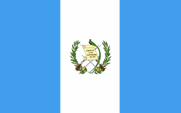
National, state and naval flag,
ratio = 5:8,
Source, by:
Wikipedia (D)






Merchant flag,
ratio = 5:8,
Source, by:
Wikipedia (D)



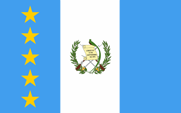
Flag of the President,
ratio = 5:8,
Source, by:
Wikipedia (D)




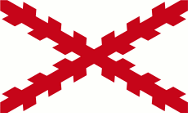
16th century to 1785,
to the Spanish sphere of influence,
Source, by: Wikipedia (EN)



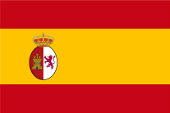
1785–1821,
to the Spanish sphere of influence,
Source, by: Wikipedia (EN)



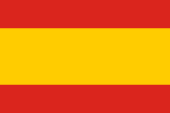
1821,
National flag,
Source, by: World Statesmen



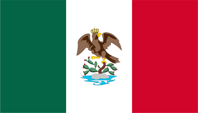
1822–1823,
Guatemala belongs to Mexico,
Source, by: World Statesmen



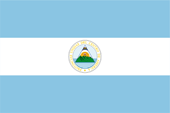
1823–1824,
Flag of the United Provinces of Central Amerika,
Source, by:
Wikipedia (D)



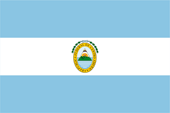
1824–1825,
Flag of the Central American Confederation,
Source, by:
Wikipedia (D)



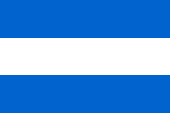
1825–1851,
National flag,
Source, by: World Statesmen



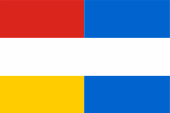
1851–1858,
National flag,
Source, by:
Wikipedia (D)



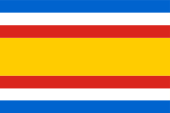
1858–1871,
National flag,
Source, by:
Wikipedia (D)




1871–1900,
National flag,
Source, by:
Wikipedia (D)



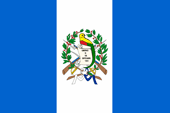
1900–1968,
National, state and naval flag,
Source, by:
Wikipedia (D)




When Guatemala declared its independence, was in use until the connection to Mexico a red-yellow-red flag which was hardly not to distinguish from the flag of Spain. Guatemala gets in 1823 a member of the Central American Confederation and used its blue-white-blue lengthwise striped flag but only until 1825 with the coat of arms of the confederation, because in this year was adoped an own coat of arms, which did not appear on the flag until 1839. The coat of arms appeared on the flag from 1839 - until about 1843 - then was adopted a new coat of arms and was used on the state flag. In the year 1851 president Puzedes added the Spanish national colors red and yellow on the flag. In the year 1858 the colors of the flag got new arranged and on 17th of August in 1871 they finally returned to the blue-white-blue flag (in the ste flag with a new coat of arms), however with vertical stripes. This flag was confirmed last on 15th of Septemeber in 1968 in context with a insignificant change of the coat of arms. The blue symbolizes the heaven, but stands futher for justice and belief.The color white stands for purity and reason. Blue, white and blue are the Central American Colors and the sequence refers to the geographic position of Central America (and therewith even of Guatemala) between Pacific and Caribbean Sea. In summary, it can be said that since 1825 the national flag was always displayed without arms, the state flag always with arms. From about 1900 onwards, it seems that only the merchant flag was used without arms, and the national, state and naval flags with arms. Furthermore, it is certain that the stripes of the flag were arranged horizontally from 1871 onwards and that the exact shade of "sky blue" was not determined until 1968. The blue was always defined as "sky blue", but never precisely determined. It was not until 1968 that a definition was made. Following the US ISCC-NBS colour system, the shade 177 "Brilliant blue" was defined and reaffirmed in 1997. Since blue was not defined before 1968, in practice any blue was often used, and more often a dark blue. Even after 1968, the regulation was apparently hardly adhered to, as the renewed regulation of 1997 shows. The many different and also dark shades of blue reproduced in books and catalogues show this clearly. Presumably, this was and is due to the peculiar ISCC-NBS colour system.
Source: Flags of the World,
Wikipedia (D),
World Statesmen,
Flaggen und Coat of arms of the Welt

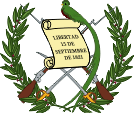
Coat of arms of Guatemala,
Source: User:K21edgo, Public domain,
via Wikimedia Commons

The coat of arms of the state was officially adoped on 12th of september in 1968. On the roll of parchment the inscription "Freedom – 15th September 1821"; on this day was proclaimed the independence. The on the roll of parchment sitting Quetzal, the national-bird of Guatemala, symbolizes the freedom. The weapons stand for the decision to the defense of the freedom. It's first coat of arms Guatemala adoped in the year 1825. It was changed marginally again and again such in the years 1843, 1851, 1858, 1871 and finally in 1968.
Source: Flags of the World,
Wikipedia (D),
Flaggen und Coat of arms of the Welt


Aircraft Roundel,
Source, by: Wikipedia (EN)

Location:
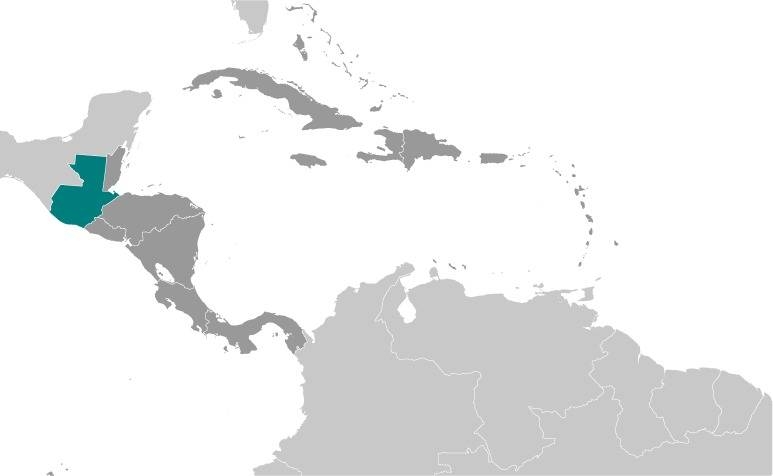
Source: CIA World Factbook
Map of the country:
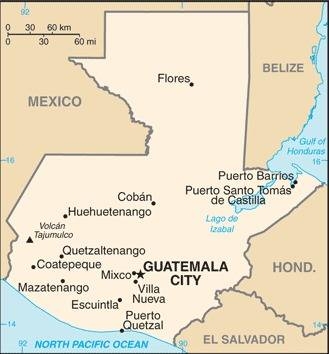
Source: CIA World Factbook

Area: 42.093 square miles
Inhabitants: 15.190.000 (2016), thereof 60% native Indians (Maya-Quiche), 35% Mestizos (Ladinos), 5% Europeans (thereof 7 500 Germans)
Religions: 47% Roman Catholic, 35% Protestant
Density of Population: 360 inh./sq.mi.
Capital: Ciudad de Guatemala, 1.010.000 inh. (2006)
official Language: Spanish
other Languages: Qiuche, Mam
Currency: 1 Quetzal (Q, GTQ) = 100 Centavos
Time Zone: GMT – 6 h
Source: Wikipedia (D),
Discovery '97, "Hilfe für Deutsche im Osten Europas. Warum?", Bundesministerium des Inneren, 1992

from 300 · the today's Guatemala is a part of the Maya Empire
1524 · Spanish conquest by Pedro de Alvarado
1535 · establishment of the Vice Kingdom of New Spain, Central America (and therewith even the today's Guatemala) gets affiliated as "General Capitanate of Guatemala"
15th of September 1821 · Guatemala declares its independence from Spain
January 1822 · Guatemala joines the Empire of Mexico
1823 · after the overthrow of the Mexican emperor the connexion to Mexico gets terminated, the states of the former General Capitanate of Guatemala merge to the "United Provinces of Central America" (Central American Confederation)
13th of April 1839 · Guatemala leaves the Central American Confederation
1952 · reform of the arable land
1954 · military coup d'état (supported by the USA)
1966-1996 · civil war
1984 · first ambitions to a demokratization
1986 · inauguration of a democratically elected president
Source:
Atlas zur Geschichte,
Wikipedia (D),
Discovery '97,
Weltgeschichte

The name of the country goes back to the name of the capital "Guatemala". This name goes back to the Mayan word "Quauhtematlan", what translated means "place of the wood piles" or "place of the wooden columns", a reference to a Mayan cult place, a sacrificial place or a sanctuary. The history of the capital is quite confusing: As the first regional capital during the Spanish conquest by Pedro de Alvarado was established in 1524 to the Mayan city of Iximché. In 1527, the seat of the administration was moved to Santiago de Guatemala, the today's "Ciudad Vieja", which was destroyed in 1541 by a natural disaster. Not far away the capital was re-established in 1543, which was renamed in "La Muy Noble and Leal Ciudad de Santiago de Caballeros de Guatemala" in 1566, which today is called "Antigua Guatemala" (Old Guatemala). It was destroyed by an earthquake in 1773. In 1775, the capital was transferred to the 25 miles away located place "Ermita", which was called "Kaminaljuyu" as old Mayan settlement. As capital it became handed over the name "Guatemala", which it carries it to this day. Other sources translate "Guatemala" as "City of Eagles".
Source:
Handbuch der geographischen Namen,
Wikipedia (D),
Atlas der wahren Namen


![]()











































